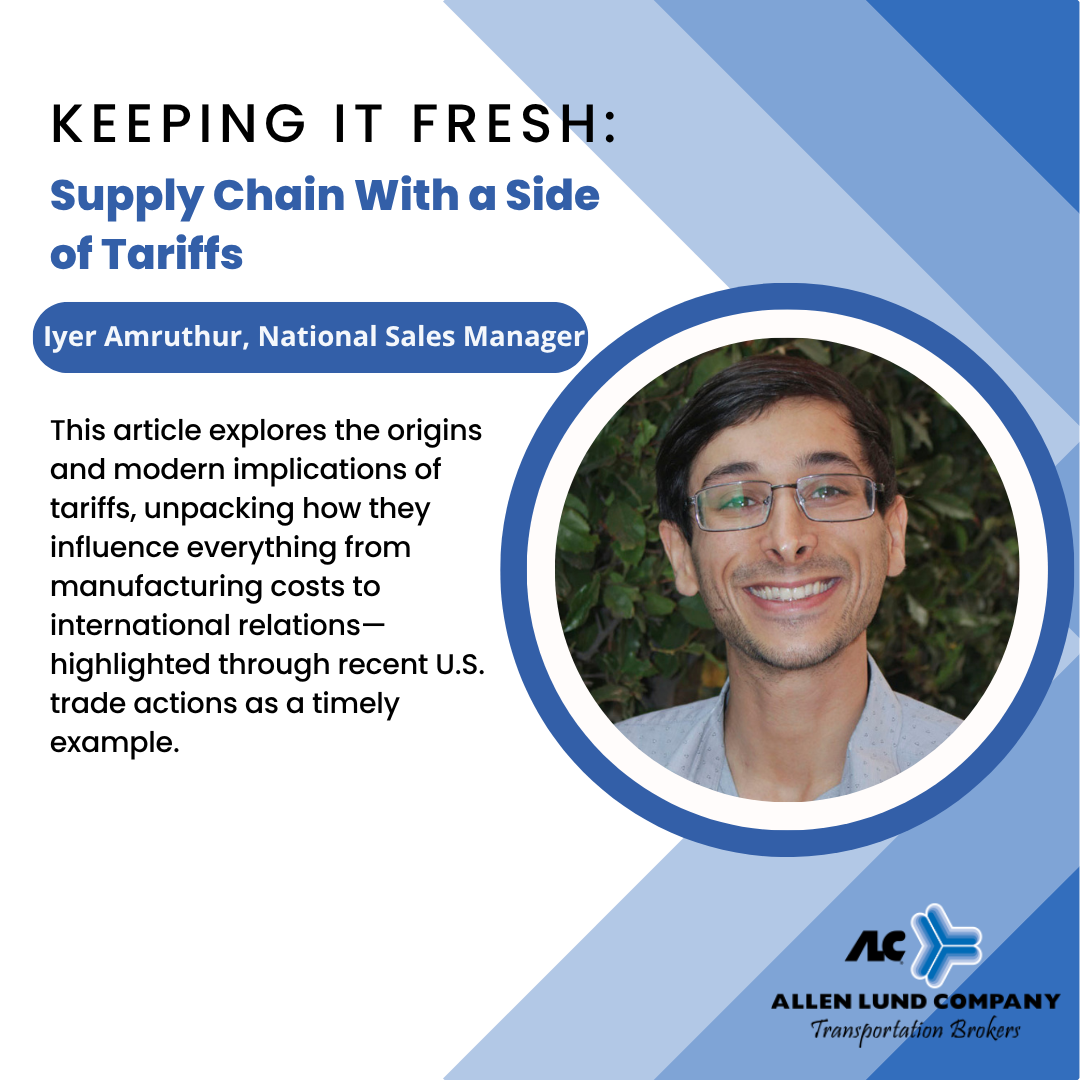
You weren’t born yet; there’s no record you can follow back, the digital and paper trail buried deeper than your local fiber cables, allowing you to read this periodical! I’m, of course, talking about 1200 BCE, when historians theorize that the first ocean trade route began. Thankfully, dusty naval logs and old boxes of hardtack are not what we’re here for. We’re here to talk about something pretty topical in today’s economic world: tariffs. A tariff is critical to trade, as it is a tax or duty paid upon importing a certain good or product class from another country. They can range from small to cripplingly large in terms of fees. They’re almost as old as trade, but not quite. The United States issued its first tariff back on July 4, 1789, 286 years ago. It levied a charge per ton of goods brought into the USA towards the selling party, such as wine, beer, and coffee.
Fast-forwarding to modern times, tariffs are a common and omnipresent part of trade. Discussions about tariff policy have evolved into a raucous, entropic, and engrossing conversation. The effects are wide-ranging and sweeping. As you can imagine, the cost of goods and services has wild implications, almost a butterfly effect on a country’s economy and even its partners. Let’s take the example of a simple tariff on imported aluminum and steel. Every car frame, CNC-turned bolt, or screw, down to the cost of buying a new truck and trailer for transport, is affected. When the cost of goods and manufacturing starts to balloon, the implications and effects become pervasive.
A more expensive sheet of aluminum can lead to layoffs, higher purchasing costs, slower development times, cutting corners, and, in some cases, the collapse of a brand or product category. I’m sure you all remember when eggs became a bit “pricey”, and we saw quite an explosion of creative, if not tasty, substitutes for the traditional American breakfast. A tariff can also vary in terms of total cost, ranging from minor to major, and levying vastly different impacts on the respective industry.
To give an example, the USA recently placed a 25% tariff on Mexican Imports (for non-USMCA-compliant goods). In order for goods to avoid this, they must be compliant under standards requiring a large majority of the final “product” to be built within the USMCA region. The regional clause allows Mexico to avoid 87% of all tariffs on goods, including cars, machinery, electrical equipment, agricultural goods, beer, and spirits. Along with a base 10% tariff for all other countries, these policies were put into play in March of this year.
Tariffs can often be implemented as a trade tool, but are also used as a reactionary or punitive measure. For instance, the tariffs levied against Mexico were cited as a deterrent and countermeasure to an influx of drugs into the USA, where efforts perceived by Mexico were assessed as “lax”, as well as solving a growing trade imbalance between the USA and Mexico. This gives the USA an opportunity to “level” the playing field by encouraging outside companies to invest in USA-based production, pressure foreign competitors to “play ball”, and aid in job creation.
Tariffs are simple, effective, and potent measures to control global and domestic trade. However, they also have wide-ranging implications that extend across both macroeconomic and microeconomic conditions. Let us look forward to a future of balanced and healthy trade!
Read the original article here


